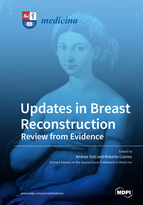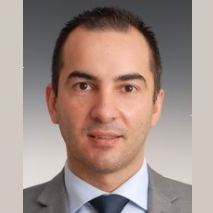Updates in Breast Reconstruction: Review from Evidence
A special issue of Medicina (ISSN 1648-9144). This special issue belongs to the section "Surgery".
Deadline for manuscript submissions: closed (31 December 2020) | Viewed by 27394
Special Issue Editors
Interests: breast cancer; breast reconstruction; oncoplastic surgery; craniofacial surgery; maxillofacial surgery; nerve surgery; pediatric plastic surgery
Special Issues, Collections and Topics in MDPI journals
Interests: plastic surgery; regenerative surgery; wound care; breast reconstruction; nipple–areola reconstruction; body-contouring surgery
Special Issues, Collections and Topics in MDPI journals
Special Issue Information
Dear Colleagues,
Breast cancer treatment has changed dramatically in the last 50 years. The advancement of technologies and better patient management have made new strategies possible for breast reconstruction. Breast reconstruction is an integral part of “breast cancer treatment” in many countries. Many techniques have been introduced, and all of them have strengths and weaknesses that should be carefully investigated.
In light of this, there is concern about different access to the most advanced and expensive treatments for breast reconstruction due to social disparities.
The use of biomaterials, such as acellular dermal matrices, and microsurgical reconstruction represent a burden on health systems and are not accessible for everyone.
The final step of breast reconstruction is the nipple–areola complex reconstruction; this is a very important surgical procedure for which a lot of techniques have been described. Clarity is needed on this topic, based on scientific evidence.
Dr. Andrea SistiDr. Roberto Cuomo
Guest Editors
Manuscript Submission Information
Manuscripts should be submitted online at www.mdpi.com by registering and logging in to this website. Once you are registered, click here to go to the submission form. Manuscripts can be submitted until the deadline. All submissions that pass pre-check are peer-reviewed. Accepted papers will be published continuously in the journal (as soon as accepted) and will be listed together on the special issue website. Research articles, review articles as well as short communications are invited. For planned papers, a title and short abstract (about 100 words) can be sent to the Editorial Office for announcement on this website.
Submitted manuscripts should not have been published previously, nor be under consideration for publication elsewhere (except conference proceedings papers). All manuscripts are thoroughly refereed through a single-blind peer-review process. A guide for authors and other relevant information for submission of manuscripts is available on the Instructions for Authors page. Medicina is an international peer-reviewed open access monthly journal published by MDPI.
Please visit the Instructions for Authors page before submitting a manuscript. The Article Processing Charge (APC) for publication in this open access journal is 1800 CHF (Swiss Francs). Submitted papers should be well formatted and use good English. Authors may use MDPI's English editing service prior to publication or during author revisions.
Keywords
- breast reconstruction
- acellular dermal matrix
- pre-pectoral
- sub muscular
- nipple reconstruction
- areola reconstruction
- breast reconstruction disparities








